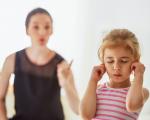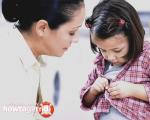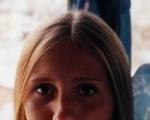Joint activities of the teacher with children 1 younger. Summary of joint educational activities in the first junior group
Organization: MBDOU "TsRR - kindergarten No. 149"
Locality: Ivanovo region, Ivanovo city
Play activities of children of the 1st junior group together with an adult
"Journey to the Land of Dwarves."
Explanatory note for the lesson.
Target: Development of children's ideas about the properties and relationships of objects in the surrounding world.
Educational areas:
- cognitive development;
- social and communicative development;
- speech development;
- artistic and aesthetic development.
Tasks:
- to form primary ideas about the properties and relationships of objects in the surrounding world: shape, color, size, spatial arrangement of objects;
- develop emotional responsiveness, a sense of empathy, readiness for joint activities with adults and peers;
- enrich children's active vocabulary;
- stimulate independent creative activity of children (visual and musical).
The purpose of using ICT.
The use of a computer presentation allows the teacher to attract and hold the attention of children and create playful motivation for activities. Using the multimedia capabilities of the presentation, the teacher organizes self-examination of children during didactic games, as well as showing the method of action (drawing). The use of ICT makes it possible to make the educational process attractive and truly modern, to solve cognitive and creative problems based on clarity.
Materials:
1. Sets of cards for educational games:
- "Find your place on the train";
- "Houses for a gnome";
- "Magic Meadow";
- "Art workshop".
2 Birds icons.
Equipment:
Laptop, tape recorder, multimedia installation, computer presentation “Journey to the Land of Dwarves.”
Lesson summary.
|
Activities of the teacher indicating the slide number |
Children's activities |
|
Stage No. 1. Introductory part (2 min) |
|
|
Target: creating play motivation to help the fairy-tale hero, updating children's passive vocabulary (names of transport), consolidating the effect of the relationship between two figures of the same shape. |
Target : helping the gnomes of a magical land, traveling by train. |
|
Activity 1. Educator attracts children's attention: “Guys, I want to tell you that this morning, when I came to kindergarten, I heard someone crying. Look into our computer and see who I saw there..." |
Activity 1. On the screen, children see a crying gnome. |
|
Slide 2. Image of a crying gnome. The gnome tells his story, the appearance of a cloud with Dyudyuka. |
|
|
Activity 2. Educator:“Let's ask what happened to the gnome. |
Activity 2. Children offer to help the gnomes. |
|
Activity 3. Educator:“I propose to go on a trip to a magical land. What can we go on?” The teacher asks to name the types of transport. The teacher offers to send him on a train trip. |
Activity 3. Children's answers: by car, plane, bus, train. |
|
The projector is turned off |
|
|
Didactic game “Find your place on the train” |
|
|
Activity 4. The teacher offers to go with tickets. Hands out a ticket to everyone (cards with figures: circle, square, triangle). “On the train,” corresponding cards are pasted on the backs of the chairs. Activity 5. The teacher turns on the music “Blue Car” (music by V. Shainsky, lyrics by E. Uspensky). |
Activity 4. Children use the shape of their ticket to find their seat “on the train”, matching the cards by shape. Activity 5. Children go on a trip to a fragment of the song “Blue Car”. |
|
Stage No. 2 Main part (4 min). |
|
|
Didactic game “Houses for a gnome” |
|
|
Target : consolidation of the action of the relationship of figures in shape, color, size; development of spatial ideas about the location of objects, consolidation in children’s speech of prepositions and words - landmarks (on, above, under, in front, etc.). |
Target : help for gnomes. |
|
Slide 3. Image of geometric shapes |
|
|
Activity 1. The teacher draws the children's attention to the fact that the gnomes' houses have been destroyed; they need to build the houses so that each of them is the same color: a red house, a blue house and a green house. Offers to build houses from a set of figures. |
Activity 1. Children assemble houses by placing figures on a template, using cards from the didactic game of the same name (see appendix) |
|
Activity 2. After completing the task, the teacher draws the children’s attention to the screen. Is this how we built the houses? |
Activity 2. Check, self-check. |
|
With each click of the computer mouse, a “house is built”: the figure moves in accordance with color, shape, size. A gnome, a builder, appears and thanks the children. |
|
|
Didactic game "Magic Meadow" |
|
|
Slide 4. Image of a clearing: house, bench, Christmas trees, paths. Pictures: kitten, hedgehog, chicken, mushroom, butterfly, flower. |
|
|
Activity 3. The teacher draws the children's attention to the location of objects in the clearing, their features (long and short path, large and small Christmas tree). The teacher suggests placing animals and plants in the clearing: put a kitten on a bench, a hedgehog on a long path, a chicken on a short path, a butterfly over a large Christmas tree, a mushroom under a small Christmas tree, a flower in the clearing in front of the house. |
Activity 3. Children place objects using cards from the didactic game of the same name (see appendix). Correctness of execution is checked using a computer by pronouncing prepositions. |
|
By clicking the mouse, the pictures move. When clicked, a gnome appears and thanks the children. |
|
|
The projector is turned off. |
|
|
Physical education minute. |
|
|
Activity 4. The teacher invites the children to play with the birds that have flown to the clearing. Each child is given a badge with a picture of a bird. Children are invited to perform the appropriate action in accordance with the color of the bird’s wings on the icon: birds with their wings flap and fly, birds with red wings crouch and peck grains, and birds with green wings stand on a leaf. To the accompaniment of music, the game is repeated 2-3 times. |
|
|
Stage No. 3 Productive activity (3 min). |
|
|
Target: learning how to draw lines and dots; choosing paint color; education of accuracy when working with paint. |
Target: helping the gnome in the art workshop. |
|
Slide 5. Artist's workshop. |
|
|
Activity 1. The teacher offers to go to the artist’s workshop and help him complete the paintings. Children are invited to choose a drawing they like to complete it (sun, cloud, flowers, rowan branch) and paint a suitable color |
Activity 1. Children choose their favorite drawing. |
|
Activity 2. Educator: "Let's ask the gnome - an artist - to teach us how to draw." |
Activity 2. View the presentation slides. |
|
Slides 6, 7,8, 9. At the click of a computer mouse, the brush “paints.” |
|
|
Activity 3. The teacher guides the children’s independent activities, if necessary, turning to the gnome-artist for help (using slide navigation) |
Activity 3. Independent productive activity of children under the guidance of an adult. |
|
Stage No. 4 Final part (1 min). |
|
|
Target : summing up, reflection. |
Target: returning to kindergarten from a trip. |
|
Slide 10. The gnome thanks the children for their help and gives them balloons. |
|
|
Activity 1. The teacher gives the children balloons. He suggests taking the train to kindergarten. |
Activity 1. Children “get on the train.” To a fragment of the song “Blue Car”, they return to kindergarten. |
|
Activity 2. Questions for children:
|
Activity 2. Children share their impressions and wishes. |
|
Activity 3. The teacher can organize a game with balloons, gradually switching children to independent play activities. |
|
Bibliography:
Educational program of preschool education MBDOU "Child Development Center - Kindergarten No. 149".
Informational resources: http://images.yandex.ru/
Natalya Maltseva
Summary of joint activities in the 1st junior group.
Summary of joint activities in junior group 1.
Subject:"Magic sponges."
Program content: To develop the ability to distinguish and compare objects by quantity, color, size. Name the properties of objects (wet, dry sponge; absorb, wring out). Develop the ability to accompany game actions with speech. Develop the ability to act alongside.
Move:I'll be walking around group, and look for something interesting. I’ll invite Makar, Dasha, Sofia, Arina, and I won’t forget Vlad. Now, it seems, everyone has been invited. We walked and walked. Oh, what did we find? (We stop near the box).What color is it? Let's sit on the carpet in a circle and see what lies there. (The box opens and SpongeBob comes out).Guys, did you find out who this is? This is SpongeBob from the cartoon, he came to visit us. He came not alone, but with his sponge friends. (The sponges fall out of the box onto the carpet).Look how many sponges there are (A lot of).Let's make friends with them and play. Who can tell what color they are? (Red, yellow, blue, green).Choose one sponge for yourself. Touch them, what they are like (Soft, smooth on one side, rough on the other). Guys, our sponges are not simple, but they are magical, they can turn into different objects. Let's turn a sponge into an accordion. We take it by the short sides and play. We can do a song sing: "La - la - la..." And now our accordion turns into a butterfly. We take the sponge by the long sides and press it in the middle with our fingers. Our butterfly flew high and landed on a flower. (Place the butterfly on a flower of the same color).And now our sponges are turning into a fence. Place the sponges next to each other on the long side. How did the fence turn out? (Beautiful, colorful, long).Let's turn our magic sponges into a tower. Place one sponge on top of another. What happened? (Tower.) Right. How did the tower turn out? (Tall, beautiful, colorful.) And our sponges can turn into a path. One sponge next to another, it turned out to be a path. And our fingers started walking along this path.
We're walking along the path (fingers walk along the sponge)
One, two! One, two! Let's clap our hands together!
One, two! One, two! (2 times)
Guys, our sponge can not only turn into different objects. Take your sponge and follow me. (we approach the table on which there is a basin of water) Let's see what happens if we put the sponge in water. What does the sponge do? She floats like a boat. To sink or not to sink? So what is she like? (light) Now press your sponge to the bottom, hold it for a while and release your hand. What happened to her (drowned) What kind of sponge has become (heavy) What can I do to make it easy again? (squeeze) Guys, let's try to squeeze out the sponge. What's happening (Bubbles appear).
SpongeBob wants to play bubbles with you. (Game "soap bubbles").
SpongeBob says goodbye to you, but leaves his friends so that you can still play with them.
Publications on the topic:
Summary of joint activities of children and parents “Staging the fairy tale “Teremok” in the 1st junior group Goal: 1. Create conditions for children to interact with adults and peers. 2. Teach children to listen to tasks, rules of games and follow them.
Summary of joint activities of a teacher with children in the second junior group “Ladybug”"Ladybug" Tasks: creating a positive emotional mood in the group; development of motor coordination, general and fine motor skills.
Program content: Cognitive tasks. To consolidate children's knowledge about the different properties of water: it has no shape, taste, smell,...
Summary of joint activities in the first junior group “Masha the Confused” Summary of joint activities in the 1st junior group “Masha is confused” Goal: to create a condition for interaction between parents and children. Tasks:.
Summary of joint activities in the first junior group “Animals are hurrying home” Summary of joint activities of teachers with parents and children in the first junior group on the topic: “Animals are rushing home” Goal: - to involve.
Summary of joint activities in the junior group “Rocket Travel” Types of children's activities: gaming, communicative, cognitive and research activities, productive, artistic perception.
 Summary of joint educational activities in the second junior group “Gift for Mom” Purpose: development of aesthetic perception, familiarization.
Summary of joint educational activities in the second junior group “Gift for Mom” Purpose: development of aesthetic perception, familiarization.
Nomination: an old fairy tale in a new way, a scenario of joint work with parents with the first younger group (2 - 3 years old).
Target: make children want to help Kolobok, evoke an emotional response to the content of the new fairy tale.
Tasks:
- To cultivate positive qualities in children: kindness, empathy, the ability to help.
- To develop coherent speech in children, to encourage them to think and speak.
- Develop a sense of collectivism, an understanding that together we can cope with any task.
- Reinforce familiar modeling techniques and play actions with dishes.
- Through productive activities, develop fine motor skills, imagination, and imagination of children.
Equipment: Theater "Bi-ba-bo" based on the fairy tale "Kolobok", screen, table, plasticine, modeling boards, doll teaware.
Preliminary work: reading Russian folk tales, looking at illustrations for fairy tales, discussing what they read, theatrical games in joint activities between the teacher and children, playing with characters from various theaters in children’s independent activities, guessing riddles, drawing fairy tale characters using stencils and templates.
Collaboration process
The event takes place in a group room. The children are busy playing. Suddenly a loud cry is heard outside the door. The teacher goes out the door and brings a crying Kolobok into the group. Children are interested in the situation and sit down on chairs prepared in advance.
Educator: Who is this crying? Did you guys find out who this is? (children's answers)
Educator: Hello, Kolobok! What happened to you? Why are you crying so bitterly? (Kolobok whispers in the teacher’s ear)
Educator: Guys, Kolobok whispers in my ear because he is very afraid to speak loudly. He is afraid of animals that want to eat him. Do you remember who in the fairy tale wanted to eat Kolobok?
Children: Hare, wolf, bear and fox.
Educator: What did the animals say to Kolobok when they met?
Children:“Kolobok, Kolobok, I’ll eat you!”
Educator: Right. And Kolobok sang a song to everyone. But who outwitted Kolobok in the fairy tale?
Children: Fox.
Educator: That's why our Kolobok escaped from the fairy tale. He doesn't want to be eaten. Come on, guys, let's help Kolobok and make fairy-tale treats for the fairy-tale heroes. For this we need multi-colored plasticine and boards.
Educator: On the way to our workshop we will play a fun game “Big feet walked along the road, and little feet ran along the path.”
The children and the teacher play a familiar game and move to another part of the group room, where Kolobok is waiting for them, there are tables on which there is everything necessary for modeling. The children are seated at the tables.
Educator: Guys, let's remember what kind of treats we already know how to make?
Children: Bagels, bagels, sweets, pancakes, carrots, pies.
Educator: Probably, both Kolobok and the heroes of the fairy tale will like such a treat. Kolobok nods and smiles. So it's time to get to work. Think about what kind of treat you want to make, grab some play dough you like and get to work.
During the modeling process, the teacher asks the children what they are modeling and, if necessary, helps by showing modeling techniques.
Children place the finished treats on plates. Kolobok monitors the children’s work, praises and encourages them.
Educator: Well done guys, we created a lot of different fabulous treats. Polina made a steering wheel, Dima made a pie, Ulyana and Denis each made a piece of candy. Maybe someone wants to show their treat to all the kids and the kolobok and name it? I think that all the animals from the fairy tale have had enough. (Addresses Kolobok) Kolobok, now aren’t you afraid to return to the fairy tale?
Kolobok: No I'm not afraid.
Educator: Guys, do you want to see and hear the new fairy tale “Kolobok”? (children's answers) Before the fairy tale comes to visit you, let's play. We will prepare to welcome guests and set the festive table for tea.
Game exercise “Waiting for guests”, setting the table for tea. After the game, the children sit on chairs in front of the screen.
The teacher tells and shows the fairy tale “Kolobok in a new way.” (puppet show)
Once upon a time there lived a grandfather and a woman. They lived, did not bother, planted a garden, grew vegetables: turnips and carrots and a few beets.
But one day the grandfather got tired of eating vegetables, and he said to the grandmother:
- Grandma, bake a bun for tea.
- What will I bake it for you from? “We don’t have any flour at all,” the grandmother answers.
“And you mark the bottom of the barrel, scrape the barn, maybe you’ll get some flour for the bun,” the grandfather continues to persuade her.
The grandmother did just that: she broomed, scrubbed, kneaded the dough, baked a ruddy bun and put it on the window to cool.
The bun got tired of sitting on the window, he jumped off and rolled along the path. The bun is rolling, rolling along the path, and a hare meets it. The hare saw the ruddy bun and said:
And the bun answers the hare:
“Don’t eat me, hare, but rather come to the kids in kindergarten for a tea party with bagels, bagels, pies and sweets, and the kids will also treat you to sweet carrots.”
The bun is rolling along the forest path and suddenly a gray wolf jumps out from behind the tree and growls:
- Kolobok, Kolobok, I will eat you.
But the bun was not afraid of the toothy wolf, but boldly answered him:
“Don’t eat me, gray wolf, but rather come to the children in kindergarten for a tea party with bagels, bagels, pies and candies.”
The wolf did not expect such an answer and went behind the Christmas tree to think about the kolobok’s words. And the bun rolled on in a good mood. But he did not continue his journey for long. The bun met a clubfooted bear on a forest path. The bear roared in a thick voice:
- Kolobok, Kolobok, I will eat you.
To which the bun answered the bear:
- Don't eat me, bear. The children in kindergarten have prepared a lot of delicious treats and invite you to visit for tea.
But the cunning fox noticed the bun from afar and decided to deceive him and eat him.
She smiled sweetly at the bun and said affectionately:
-Where are you going, little guy?
“I’m traveling through the forest and inviting everyone to the children’s kindergarten for tea,” the bun answered the fox.
— What is “tea drinking” and what do you eat it with? — the fox became interested, forgetting that she recently wanted to eat a bun.
“The guys have prepared a lot of fabulous treats for the animals: bagels, bagels, pies with sweets, and they are waiting for you, fox, for tea with treats.”
“Let’s go quickly to the guys, I really want to try their treats,” the fox hurried.
The fox and the bun walked along the path in the opposite direction, along the way they captured a bear, a wolf and a hare and came to the guys in the group.
The teacher appears from behind the screen with the characters from the fairy tale, invites the children to put the animals on their hands and give them tea and treats.
The tea party is held in the form of a role-playing game “Treating the guests with tea.”



